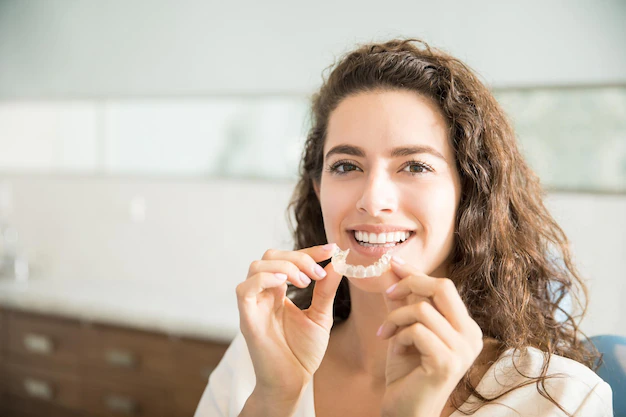Are you tired of feeling self-conscious about your crooked teeth? Are you considering orthodontic treatment but unsure whether to go with traditional braces or clear aligners? Look no further! In this blog post, we’ll compare the pros and cons of each option so that you can make an informed decision on which is the better choice for straightening your teeth. Get ready to discover everything you need to know about clear aligners vs braces!
Introduction to Clear Aligners and Braces
If you’re considering straightening your teeth, you may be wondering which treatment is right for you. Clear aligners and braces are both popular options, but which one is the better choice?
To help you make a decision, we’ve put together a guide to clear aligners and braces. We’ll cover the basics of each treatment and compare their key features. After reading this guide, you should have a better idea of which option is right for you.
Pros and Cons of Clear Aligners vs Braces
If you’re considering straightening your teeth, you may be wondering whether to go with clear aligners or braces. Both options have their pros and cons, so it’s important to weigh your options before making a decision.
Here are some of the pros and cons of clear aligners vs braces:
Pros of Clear Aligners:
- They are virtually invisible, so no one will know you’re wearing them unless you tell them.
- They can be removed for eating and drinking, so you don’t have to worry about food getting stuck in your braces.
- They are generally more comfortable than braces, as there are no wires or brackets rubbing against your gums.
Cons of Clear Aligners:
- They can be more expensive than braces, depending on your insurance coverage.
- They require more diligence on your part in terms of cleaning and flossing, as they can easily trap food and bacteria if not cared for properly.
- You have to be careful not to lose them when you take them out, as they can be costly to replace.
Pros of Braces:
- They are typically less expensive than clear aligners, especially if your insurance covers orthodontic treatment.
- You don’t have to worry about losing them or taking them out for eating and drinking, as they’re permanently affixed to your teeth.
- Some people feel that they get results faster with braces than with clear aligners.
Cons Of Braces:
- Braces can be quite uncomfortable, especially when first installed
- Braces can make eating certain foods difficult and can cause irritation to the gums and cheeks
- Braces must be regularly adjusted and tightened, which can be time-consuming and costly
Maintenance Requirements for Both Options
The clear aligners will need to be replaced every two weeks or so, and you’ll need to see your dentist or orthodontist for regular checkups. The braces will also need to be checked and adjusted periodically by your dentist or orthodontist. You’ll need to brush and floss your teeth regularly, regardless of which option you choose.
Alternatives to Clear Aligners and Braces
There are a few alternatives to clear aligners and braces that can be considered when looking to straighten teeth. These include:
Invisalign: This is a system that uses clear, removable aligners to gradually shift teeth into place. It is nearly invisible when worn, making it a popular choice among adults.
Damon Braces: These are self-ligating braces that use a sliding door mechanism to hold the wire in place. They require fewer adjustments than traditional braces and can cause less discomfort.
ClearCorrect: This system uses clear plastic aligners to slowly move teeth into the desired position. It is removable for eating and cleaning, and is nearly invisible when worn.
Each of these options has its own benefits and drawbacks, so it is important to consult with an orthodontist to determine which would be the best fit for you.
Conclusion
Whatever you decide, straightening your teeth is an important decision that can have long lasting implications on the health of your mouth. If you’re considering clear aligners or braces to straighten your teeth, it is best to discuss these options with a qualified orthodontist. They will be able to provide personalized advice and help you determine which option is most suitable for your own set of circumstances. With the right care and maintenance, either treatment can give you beautiful smile results that last for years!


